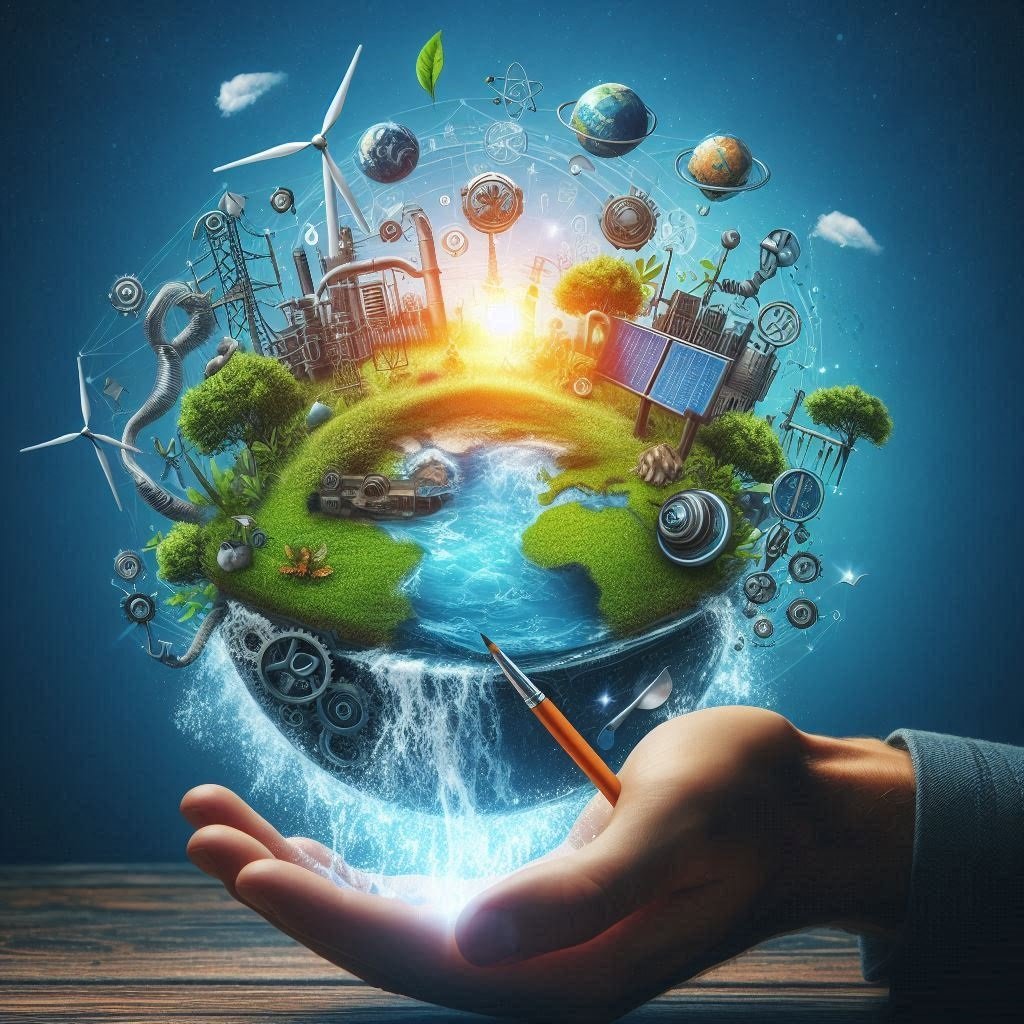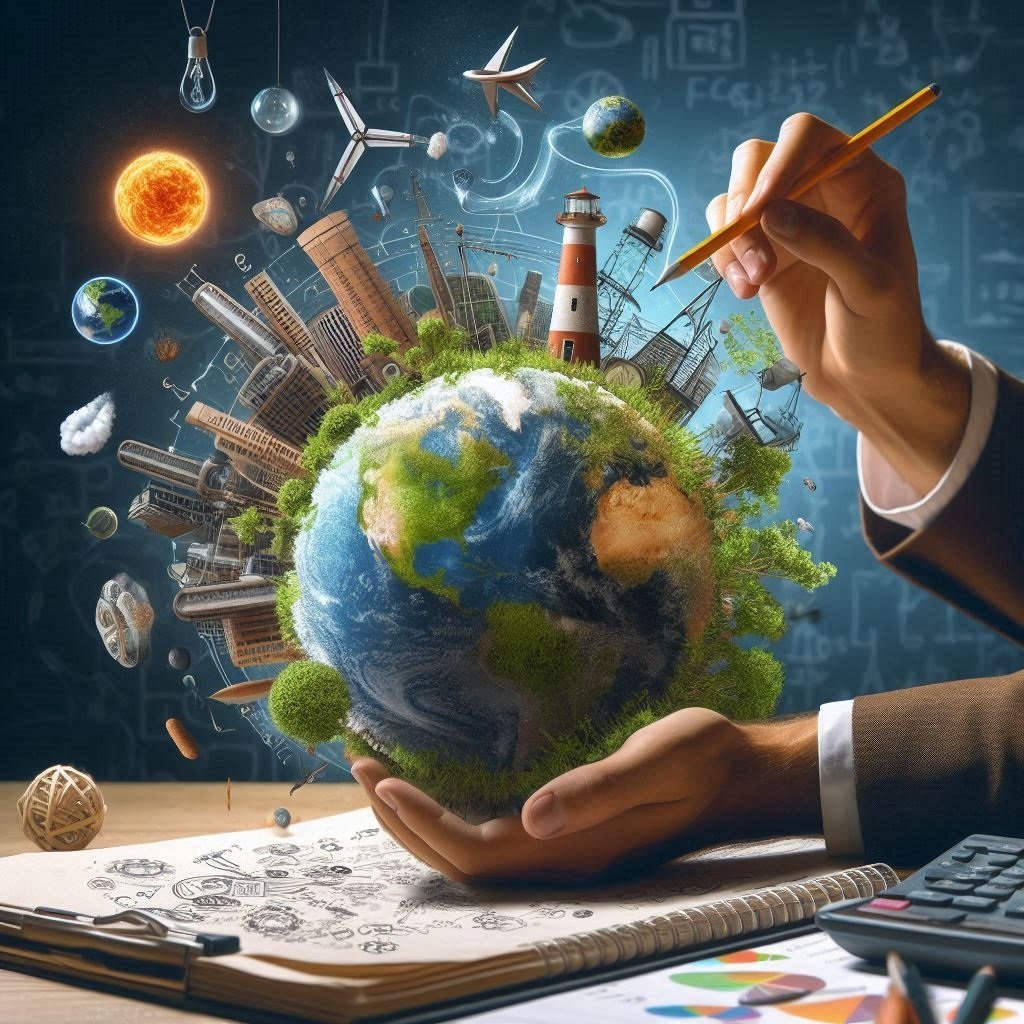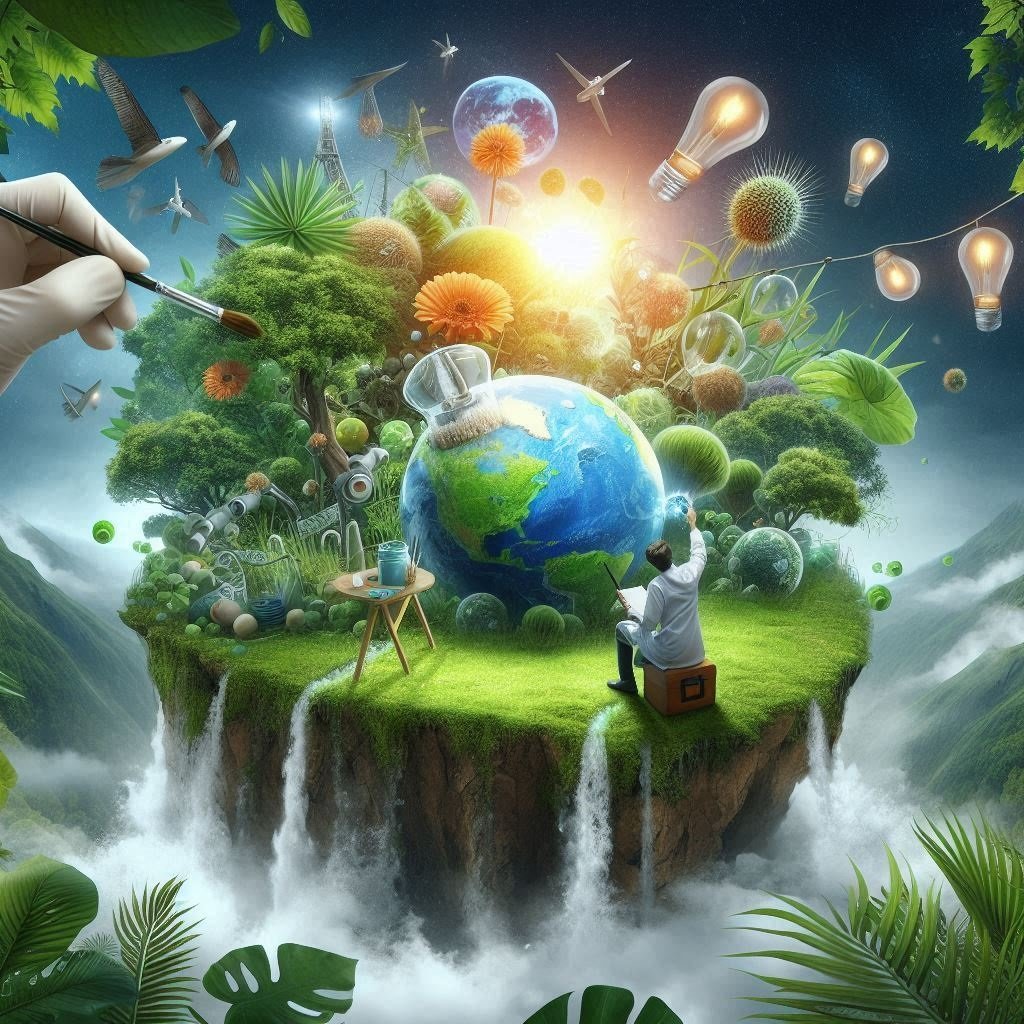Environmental science is the key to understanding the world we live in. It is a field that combines different sciences to study our environment and find solutions to its problems. By delving into environmental science, we can uncover the secrets of our planet and work towards a sustainable future. This blog will take you on a journey through ecosystems, climate change, sustainability solutions, and more. Let’s dive in!
Understanding Ecosystems: The Building Blocks of Nature
Ecosystems are the foundation of environmental science. They are communities of living organisms interacting with their physical environment. These interactions form a delicate balance that sustains life on Earth.

- What is an Ecosystem? An ecosystem includes plants, animals, microorganisms, and their surroundings. These elements work together in a web of life. They depend on each other for survival. A forest, a desert, a coral reef, and even a city can be ecosystems.
- Components of an Ecosystem
- Biotic Factors: These are the living parts of an ecosystem, like plants and animals.
- Abiotic Factors: These include non-living parts such as soil, water, and air.
- Types of Ecosystems Ecosystems vary widely. They can be terrestrial (land-based) or aquatic (water-based). Some examples include:
- Forests: Home to diverse plant and animal species.
- Oceans: Covering 70% of the Earth’s surface, rich in marine life.
- Deserts: Harsh environments with unique adaptations.
- Wetlands: Areas saturated with water, crucial for bird species.
- Ecosystem Services Ecosystems provide numerous services that benefit humans. These include:
- Provisioning Services: Such as food, water, and raw materials.
- Regulating Services: Including climate regulation and water purification.
- Cultural Services: Offering recreational, spiritual, and educational benefits.
- Supporting Services: Like nutrient cycling and soil formation.
The Science of Climate Change: Unveiling the Truth
Climate change is one of the most pressing issues in environmental science. It refers to significant changes in global temperatures and weather patterns over time.
- What Causes Climate Change? Climate change is primarily driven by human activities. These include burning fossil fuels, deforestation, and industrial processes. These activities release greenhouse gases like carbon dioxide and methane into the atmosphere.
- Impacts of Climate Change The effects of climate change are widespread and severe:
- Rising Temperatures: Leading to heatwaves and wildfires.
- Melting Ice Caps: Causing sea levels to rise.
- Extreme Weather Events: Such as hurricanes and floods.
- Loss of Biodiversity: Threatening species that cannot adapt quickly.
- The Role of Carbon Footprint Our carbon footprint is the total amount of greenhouse gases we emit. Reducing our carbon footprint is essential in combating climate change. Simple actions like using public transport, conserving energy, and supporting renewable energy can make a big difference.
Sustainability Solutions: Building a Greener Future
Sustainability is about meeting our needs without compromising the ability of future generations to meet theirs. It is the cornerstone of environmental science and crucial for our planet’s future.
- Renewable Energy Renewable energy sources like solar, wind, and hydro power are key to sustainability. They produce clean energy without depleting natural resources. Investing in renewable energy can significantly reduce our carbon footprint.
- Sustainable Agriculture Agriculture can be both a culprit and a solution for environmental issues. Sustainable farming practices include:
- Crop Rotation: Helps maintain soil health.
- Organic Farming: Reduces chemical use and promotes biodiversity.
- Agroforestry: Combines trees and crops to benefit both.
- Waste Management Proper waste management is vital for a sustainable future. Recycling, composting, and reducing plastic use can minimize waste. Innovative solutions like waste-to-energy technologies can turn waste into a resource.
- Water Conservation Water is a precious resource. Simple practices can help conserve water:
- Fixing Leaks: Prevents water wastage.
- Using Water-Efficient Appliances: Reduces water usage.
- Rainwater Harvesting: Collects and stores rainwater for use.
The Role of Individuals: Making a Difference
Every individual has a role to play in environmental conservation. Small actions can lead to significant changes when collectively embraced.
- Adopting a Green Lifestyle Living sustainably involves making conscious choices:
- Reduce, Reuse, Recycle: Minimizes waste and conserves resources.
- Energy Efficiency: Using energy-efficient appliances and lights.
- Sustainable Transportation: Walking, biking, or using public transport.
- Supporting Environmental Policies Advocacy and support for environmental policies can drive change. Voting for leaders who prioritize the environment and supporting eco-friendly laws are vital steps.
- Educating and Raising Awareness Knowledge is power. Educating others about environmental issues can inspire action. Awareness campaigns, social media, and community programs can spread the message.
Biodiversity: The Web of Life
Biodiversity refers to the variety of life on Earth. It includes the diversity of species, ecosystems, and genetic variations within species. Biodiversity is crucial for ecosystem stability and human well-being.

- Importance of Biodiversity
- Ecosystem Health: Diverse ecosystems are more resilient to changes.
- Food Security: Provides a variety of crops and livestock.
- Medicinal Resources: Many medicines are derived from plants and animals.
- Cultural Value: Biodiversity enriches cultures and traditions.
- Threats to Biodiversity
- Habitat Destruction: Due to deforestation, urbanization, and agriculture.
- Pollution: Contaminates air, water, and soil.
- Overexploitation: Unsustainable hunting, fishing, and harvesting.
- Invasive Species: Non-native species that disrupt local ecosystems.
- Conservation Efforts Conservation is crucial to protect biodiversity:
- Protected Areas: National parks and wildlife reserves.
- Legislation: Laws to protect endangered species.
- Restoration Projects: Rebuilding damaged ecosystems.
- Community Involvement: Engaging local communities in conservation.
Pollution: A Global Challenge
Pollution is the introduction of harmful substances into the environment. It affects air, water, and soil, posing a threat to human health and ecosystems.
- Types of Pollution
- Air Pollution: Caused by emissions from vehicles, industries, and burning fossil fuels. Leads to respiratory diseases and contributes to climate change.
- Water Pollution: Results from industrial discharge, agricultural runoff, and plastic waste. Harms aquatic life and contaminates drinking water.
- Soil Pollution: Due to chemicals from pesticides, waste disposal, and industrial activities. Reduces soil fertility and harms plants and animals.
- Solutions to Pollution
- Reducing Emissions: Using clean energy and improving fuel efficiency.
- Waste Management: Recycling and proper disposal of hazardous waste.
- Clean-up Initiatives: Removing pollutants from contaminated sites.
- Regulations: Enforcing laws to limit pollution.
Climate Action: What We Can Do
Climate action refers to efforts to combat climate change and its impacts. It involves reducing greenhouse gas emissions and adapting to changes.
- Mitigation Strategies
- Renewable Energy: Investing in solar, wind, and other clean energy sources.
- Energy Efficiency: Improving the energy use of buildings, appliances, and vehicles.
- Afforestation: Planting trees to absorb carbon dioxide.
- Sustainable Practices: Reducing waste and conserving resources.
- Adaptation Measures
- Infrastructure: Building resilient infrastructure to withstand climate impacts.
- Agriculture: Developing crops resistant to climate extremes.
- Water Management: Ensuring water availability during droughts.
- Health Systems: Preparing for climate-related health issues.
The Future of Environmental Science
Environmental science is an ever-evolving field. It combines technology, innovation, and traditional knowledge to solve environmental problems.
- Technological Innovations
- Green Technology: Innovations that promote sustainability.
- Environmental Monitoring: Using satellites and sensors to track changes.
- Biotechnology: Developing eco-friendly materials and processes.
- Interdisciplinary Approaches Environmental science integrates various disciplines:
- Geology: Studying Earth’s physical structure.
- Biology: Understanding living organisms.
- Chemistry: Analyzing environmental pollutants.
- Social Sciences: Exploring human behavior and policies.
- Global Cooperation Environmental issues transcend borders. International cooperation is essential:
- Agreements: Treaties like the Paris Agreement aim to reduce emissions.
- Organizations: Bodies like the UN promote environmental initiatives.
- Collaboration: Sharing knowledge and resources globally.
Conclusion
Environmental science unravels the mysteries of our planet. It guides us in understanding ecosystems, tackling climate change, and adopting sustainable practices. Every action counts in the quest to protect our environment. By embracing the principles of environmental science, we can build a healthier, more sustainable future for generations to come. So, let’s unbolt our planet’s secrets and work together for a better world.
